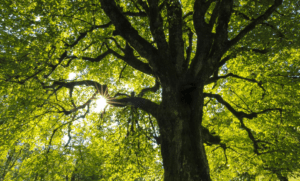Trees add beauty and value to your landscape, but like any living organism, they are vulnerable to diseases. Early detection is key to preventing significant damage and ensuring that your trees remain healthy and strong. Understanding the early signs of tree disease and the most common types of disease can help you take quick action, including scheduling tree trimming and maintenance, which are crucial for disease treatment and prevention.
Common Tree Diseases and How to Treat Them
Trees are vulnerable to a variety of diseases that can weaken their structure and impact their health. Diseases and treatments include:
Leaf Spot
Leaf spot is caused by fungal pathogens, leading to discolored spots on tree leaves. Treatment involves pruning to improve air circulation, which helps reduce moisture buildup, and applying fungicides to infected areas to halt the spread.
Powdery Mildew
Powdery mildew is a fungal disease that creates white, powdery patches on the surface of leaves. Treat by removing infected leaves and applying fungicides specifically formulated for ornamental plants to prevent further damage.
Root Rot
Root rot often occurs due to overly wet soil, leading to decayed roots and stunted tree growth. Treatment includes improving soil drainage to prevent water buildup and avoiding overwatering, which helps the tree recover.
Cankers
Cankers are dead patches that appear on tree bark, often caused by fungal infections or environmental stress. Treat by pruning infected branches using sterilized tools to prevent the spread of the disease.
Verticillium Wilt
Verticillium wilt causes wilting leaves and branch dieback due to a soil-borne fungus. Treatment includes pruning affected branches to prevent the fungus from spreading and improving soil conditions to enhance drainage and reduce stress on the tree.
Anthracnose
Anthracnose affects the leaves and twigs of trees, causing them to brown and drop prematurely. Treat by removing infected plant parts and applying a fungicide labeled for anthracnose control to prevent further spread.
Cedar Rust
Cedar rust causes yellow spots on leaves, often seen on cedar and juniper trees. Treat by removing affected branches and applying a fungicide in early spring to protect the tree from future infections.
Beech Bark Disease
Beech bark disease is caused by a combination of scale insects and fungal infection, leading to bark damage and tree decline. Treat by removing infected branches and closely monitoring for further infestation, applying appropriate control measures as needed.

How Tree Trimming and Maintenance Helps with Disease Prevention
Regular tree trimming is one of the most effective ways to prevent the spread of tree disease. By removing dead, diseased, or overcrowded branches, you can improve air circulation within the tree’s canopy, reducing humidity and the potential for fungal growth. Trimming also helps direct the tree’s energy toward healthy growth and prevents diseases from spreading to other parts of the tree.
Soil and Water Management
Overwatering or poor drainage can cause excess moisture, which fosters fungal growth. Watering deeply but infrequently helps ensure that the tree’s roots receive adequate hydration without becoming waterlogged. Additionally, mulching around the base of the tree can help regulate soil moisture and temperature, promoting a healthier root system.
Regular Inspections
Routine tree inspections allow for early detection of disease. Regularly check your trees for signs of wilting, discoloration, fungal growth, or other abnormalities. Early detection allows for quick intervention, such as applying fungicides or pruning affected areas.
Learn More
Understanding the early signs of tree disease and taking preventive measures like tree trimming and regular maintenance can protect your trees from long-term damage. By keeping an eye out for common issues like leaf discoloration, wilting, or fungal growth, you can ensure that your trees remain healthy and vibrant. If you suspect a problem with your trees in New York, Connecticut, or New Jersey, contact North Eastern Tree, Shrub & Lawn Care today.


